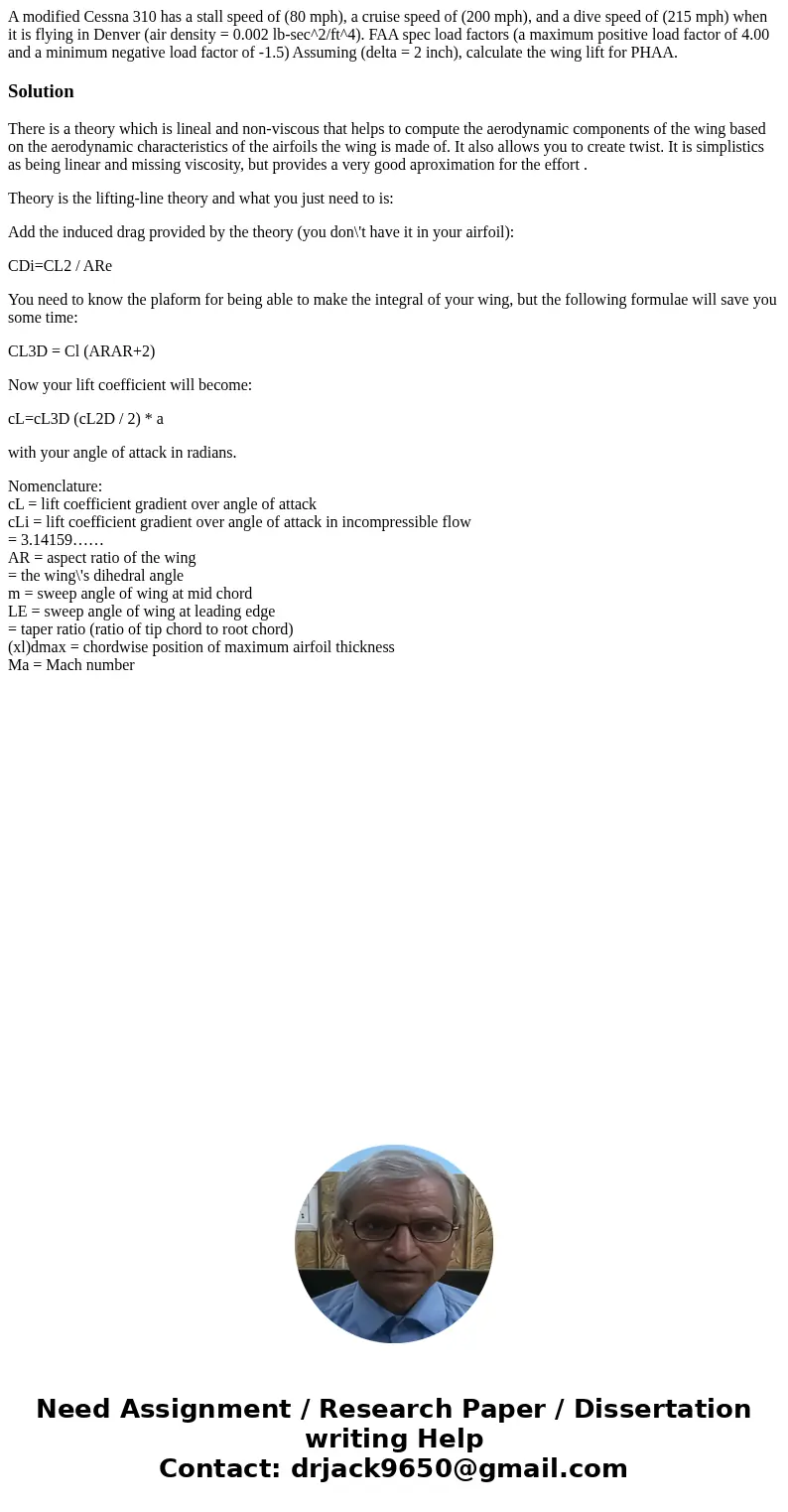A modified Cessna 310 has a stall speed of 80 mph a cruise s
Solution
There is a theory which is lineal and non-viscous that helps to compute the aerodynamic components of the wing based on the aerodynamic characteristics of the airfoils the wing is made of. It also allows you to create twist. It is simplistics as being linear and missing viscosity, but provides a very good aproximation for the effort .
Theory is the lifting-line theory and what you just need to is:
Add the induced drag provided by the theory (you don\'t have it in your airfoil):
CDi=CL2 / ARe
You need to know the plaform for being able to make the integral of your wing, but the following formulae will save you some time:
CL3D = Cl (ARAR+2)
Now your lift coefficient will become:
cL=cL3D (cL2D / 2) * a
with your angle of attack in radians.
Nomenclature:
cL = lift coefficient gradient over angle of attack
cLi = lift coefficient gradient over angle of attack in incompressible flow
= 3.14159……
AR = aspect ratio of the wing
= the wing\'s dihedral angle
m = sweep angle of wing at mid chord
LE = sweep angle of wing at leading edge
= taper ratio (ratio of tip chord to root chord)
(xl)dmax = chordwise position of maximum airfoil thickness
Ma = Mach number

 Homework Sourse
Homework Sourse